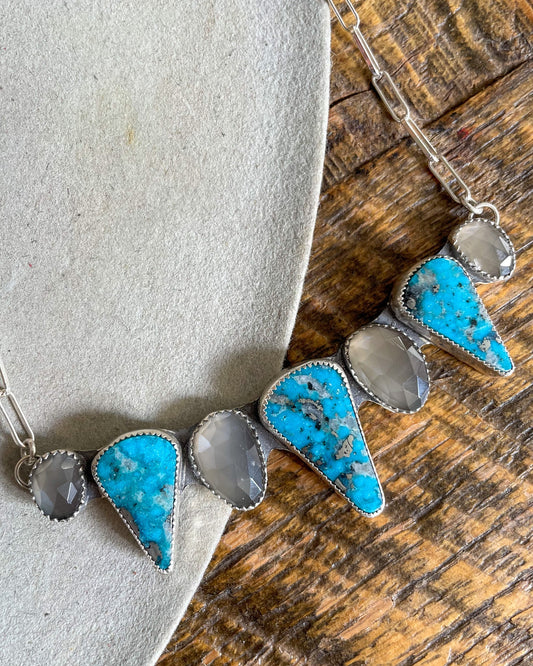
Sterling Silver vs .925: Not Always the Same
Share
Here’s what you’re really getting when you shop for silver jewelry — and why .925 matters.
When you buy something labeled “sterling silver,” you probably expect it to be high quality, long-lasting, and made with real silver.
But here’s the surprising truth: not all “sterling silver” is actually .925 silver, and depending on where it’s made, “sterling” might not mean what you think it does.
If you're investing in jewelry that should last a lifetime — and hold its value — knowing the difference between sterling silver and .925 silver is essential.
What Is .925 Silver?
Let’s start with the gold standard — or rather, the silver standard.
When you see .925 silver, it means the metal is made of 92.5% pure silver and 7.5% alloy (usually copper). This precise balance gives silver the strength it needs to be worn every day while retaining its beauty, shine, and value.
In the United States, the term "sterling silver" is legally defined by the Federal Trade Commission. If a piece is called sterling silver here, it must contain at least 92.5% pure silver. You’ll often see the mark “.925” stamped discreetly on a piece — a symbol of authenticity and quality.
So, What’s “Sterling Silver” Then?
“Sterling silver” is a term that has been used for centuries to refer to high-quality silver — but the meaning isn’t consistent globally.
In the U.S., “sterling” = .925. But in other parts of the world? Not always.
The word “sterling” can be used loosely in some countries, even for jewelry that doesn’t meet the .925 standard — or doesn’t contain real silver at all. On global online marketplaces or at tourist shops abroad, you might see jewelry labeled “sterling silver” that turns your finger green, feels lightweight, or doesn’t hold up over time.
The reality is: some “sterling silver” isn’t even close to .925.
Global Silver Standards Are Not Created Equal
Not every country enforces the same silver standards, and that can seriously impact what you’re actually getting. Here's how some international "sterling" standards compare:
-
United States: Requires 92.5% silver to label a piece as "sterling."
-
UK & Italy: Generally maintain high silver standards and clear hallmarking practices (.925, 800, 950, etc.).
-
Mexico & Thailand: Known for skilled silversmithing, but standards and enforcement vary. Many pieces are .925, but others may fall short — especially in tourist-heavy areas.
-
China, India & some mass-market imports: “Sterling silver” can be used as a marketing term without regulation, and some jewelry may contain very little real silver.
This inconsistency is why it’s so important to look for the .925 stamp and buy from makers who are transparent about their materials.
Why Mass-Produced “Sterling Silver” Often Falls Short
Many large jewelry sellers label their pieces as “handmade sterling silver,” but if they’re mass-produced overseas, there’s no guarantee they’re actually .925 silver.
Pieces made in bulk often:
-
Feel unusually lightweight or thin
-
Don’t maintain their appearance with regular wear
-
Don’t hold long-term value or resale potential
These items may be sold at a lower price point, but the trade-off is a lack of durability and unclear metal content.
What to Look For When Buying Silver Jewelry
To protect yourself — and your style — here are a few simple tips to shop smarter:
1. Look for the .925 Stamp
This is the clearest sign that your jewelry meets U.S. standards for real sterling silver.
2. Ask Where It’s Made
If the seller can’t tell you where the piece was made or what standards it follows, it’s a red flag.
3. Choose Makers Who Disclose Materials
Small batch artists and independent jewelers (like me!) often use better materials and will openly (and enthusiastically) share how their pieces are made.
Inside Lisa Marie Studios: A Commitment to Quality
At Lisa Marie Studios, I work exclusively with solid .925 sterling silver. Each piece I make is stamped with the .925 mark as a symbol of authenticity and quality.
Even more — for every bezel (the setting that holds the gemstone), I use .999 fine silver. This ultra-pure silver is softer and allows me to securely set stones by hand without compromising the structure or finish of the piece.
Each piece is handmade by me in Texas, and every material I use is sourced with care. You’ll always see a .925 stamp on my work — a small symbol with big meaning.
Because when it comes to jewelry, you deserve the real thing — and you deserve to know the difference.
The Bottom Line: Know What You’re Wearing
The next time you see “sterling silver” in a product description, pause and look a little closer. If it doesn’t say .925, it might not be what it claims to be. And if the price seems too good to be true — trust your gut.
You work hard for your money. You deserve jewelry that’s made with honesty, crafted by hand, and designed to last.
👉 Explore my collection of modern handcrafted .925 silver jewelry here — where bold design meets trusted craftsmanship.
✨ Bonus: Common Questions About Sterling Silver vs .925
Is sterling silver real silver?
Yes — when it’s truly .925. That means it’s made of 92.5% pure silver, making it real, high-quality silver suitable for jewelry.
Is .925 silver better than sterling silver?
Technically, they should be the same. But .925 is a guaranteed measurement, while “sterling silver” can be vague — especially outside the U.S.
How do I know if my jewelry is .925?
Look for a .925 stamp, ask the maker, and buy from trusted sources. Acid testing is also an option for verification.



